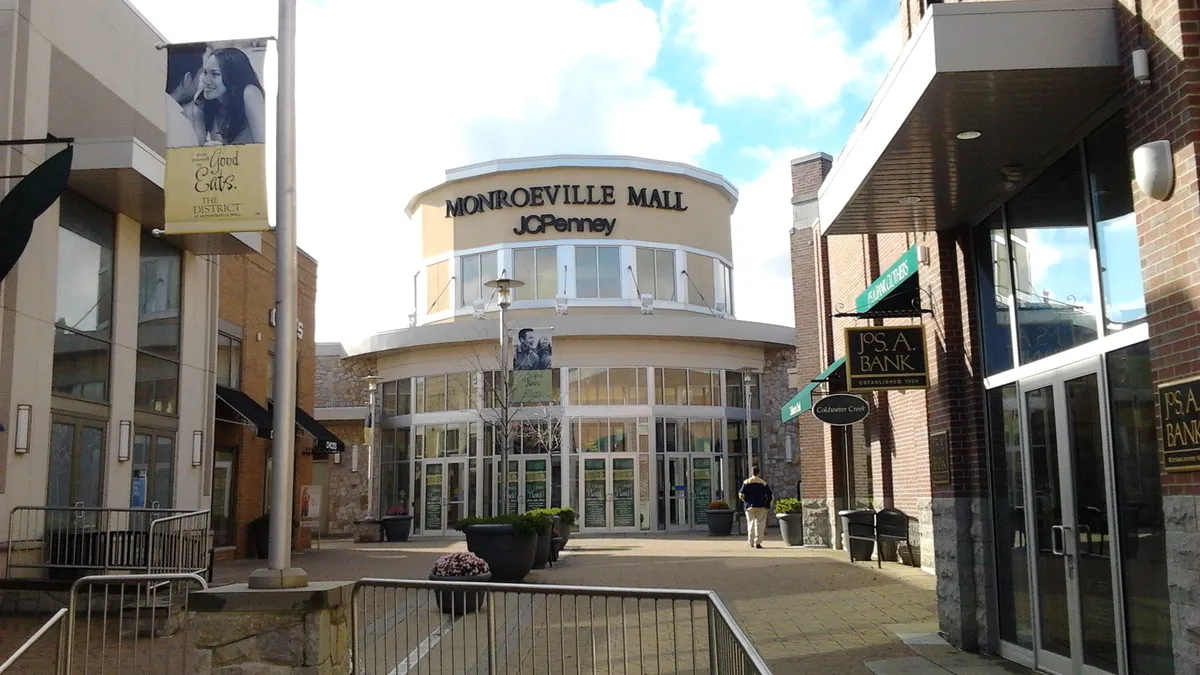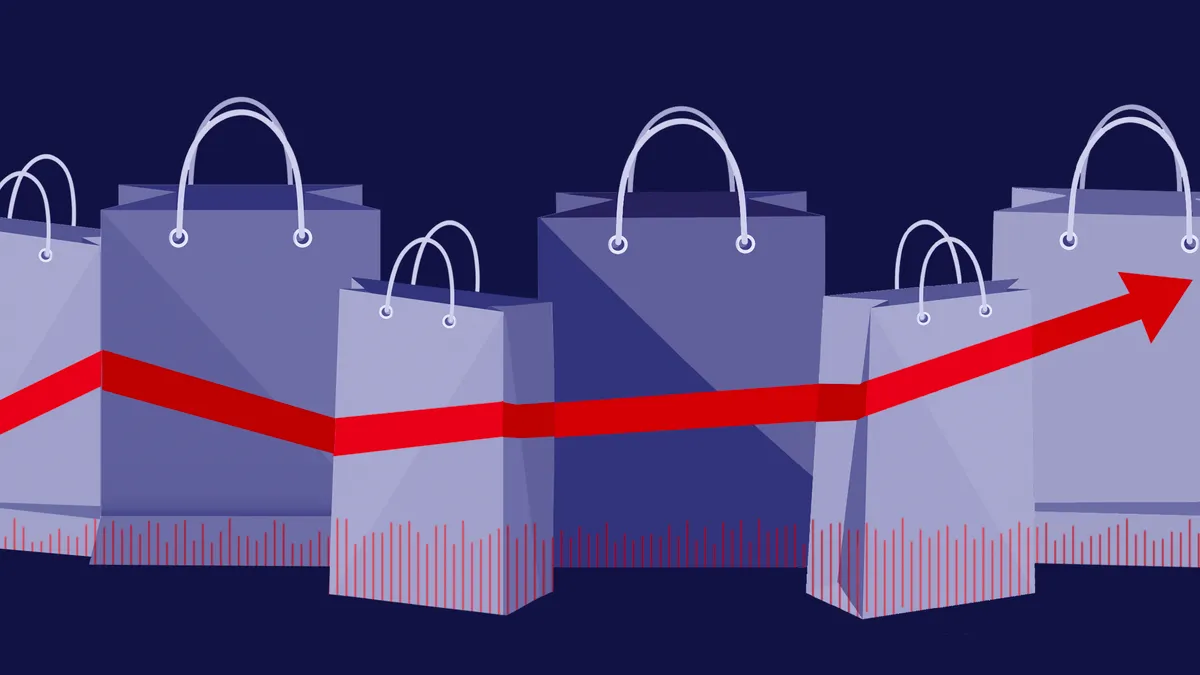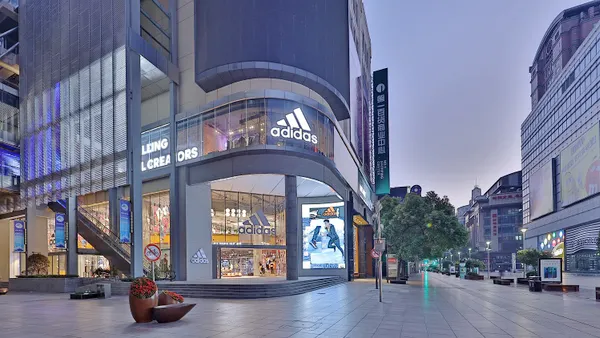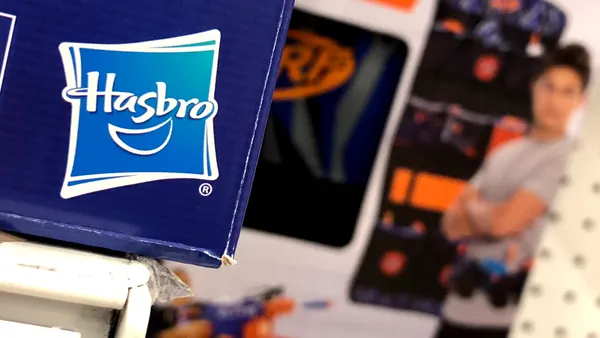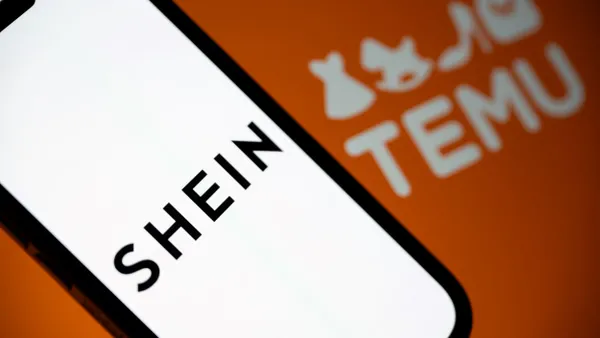Dive Brief:
-
Urban Outfitters, which runs apparel and home goods brands Anthropologie, Bhldn, Free People, Terrain and Urban Outfitters as well as a food and beverage division, on Tuesday reported first quarter results that missed expectations and indicated a slump in its apparel and accessories retail operations.
-
Home goods and beauty sales were robust, executives told analysts Wednesday, according to a transcript from Seeking Alpha, and they said the company has had to adjust to its customers’ more casual apparel choices. Total Q1 net sales were $761 million, flat compared to the first quarter last year, missing the Thomson Reuters I/B/E/S forecast for $768.6 million cited by Reuters. Earnings came in at 10 cents per share, also missing the Thomson Reuters I/B/E/S forecast for 16 cents per share.
-
Same-store sales online and through its direct-to-consumer catalogs saw “strong, double-digit growth,” helping to temper the same-store sales decline of 3.1%, according to a company press release. Wholesale Q1 net sales rose 14%. By brand, Free People same-store sales rose 1.5%, but that measure declined 3.1% at Urban Outfitters and 4.4% at Anthropologie, the company said.
Dive Insight:
In a conference call with analysts Wednesday, CEO Richard Hayne said the tough apparel environment will continue to push retailers out. “This issue is impacting virtually all U.S. brick and mortar retailers,” he said, according to a transcript from Seeking Alpha. “There are simply too many stores and too many malls in North America. We expect to see more closures and brands disappear until a healthier balance is reached.”
Even the company’s stores, which do offer compelling shopping experiences, are suffering, and its answer to that is fourfold: fostering its e-commerce sales, turning more to customers outside North America (in particular in Europe and the Middle East), ramping up its wholesale play and boosting offerings in better-performing sub-segments, like Free People’s Movement yoga wear and home goods. Such a pivot will require planning, testing and learning, and so will require patience, Hayne said.
“[T]he URBN brands are powerful and still possess significant untapped opportunities for growth,” Hayne insisted. “The four areas of opportunities I just discussed, if properly implemented, could add many hundreds of millions, if not billions of dollars to our top line. This at a time when many North American retailers are desperately searching for growth vehicles because the traditional method opening more stores is no longer viable. We believe our brands have significant and exciting alternatives and we intend to exploit them. To achieve this growth we intend to invest for the long term.”
There’s no doubt that the apparel sector is “soft,” according to GlobalData Retail analyst Håkon Helgesen, but some of the weak performance comes from the company’s own shortcomings.
“Foremost among these is the continued shift to online,” Helgesen said in a note emailed to Retail Dive. “Urban continued to see double-digit growth in its direct to consumer channel. However, this came squarely at the expense of stores, which shoppers are visiting less often and from which they are buying less. A particular issue here is that it costs Urban more to fulfill from its online operation than it does from a store, so the direct channel's cannibalization of sales is costing the company margin and hurting profits.”
Plus, while the company’s stores are nicely presented as curated destinations, shopping in them is often confusing, and the merchandise of late has been off the mark, he said. “The customer has to do a lot of work in finding the right product, which is one of the reasons increasing numbers are opting to buy online where sorting and filtering options make it easier to identify items of interest,” according to Helgesen. “In our opinion, the clothing offer is too eclectic. Unfortunately, over the past few months, this seems to have become worse rather than better with some jarring and off-pitch styles creeping into the mix.”
Considering the level of work to be done, GlobalData Retail analysts expect the rest of the year to “remain soft,” especially at the company’s flagship Urban Outfitters brand. “[T]he company has outlined a streamlining of its store operations, is taking a more conservative approach to store growth, and is trying to bolster talent across the apparel parts of its business,” Helgesen said. “All these things will be helpful, but we feel that there is now lots of work to do in rebuilding customer confidence."





